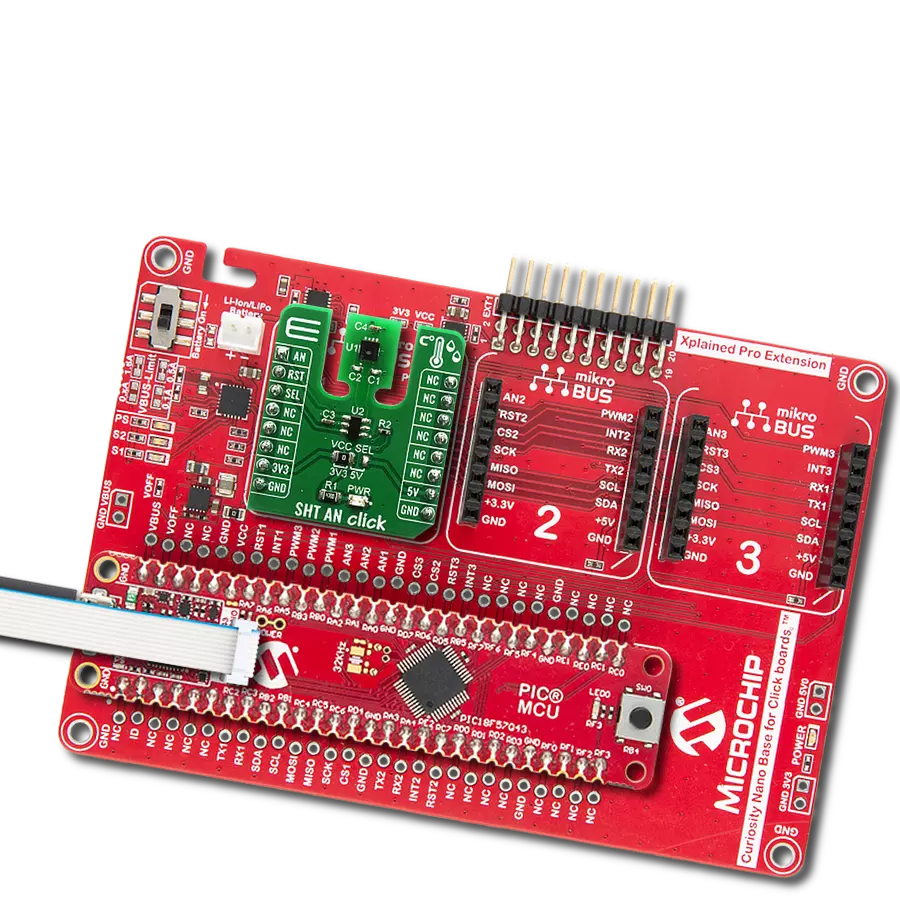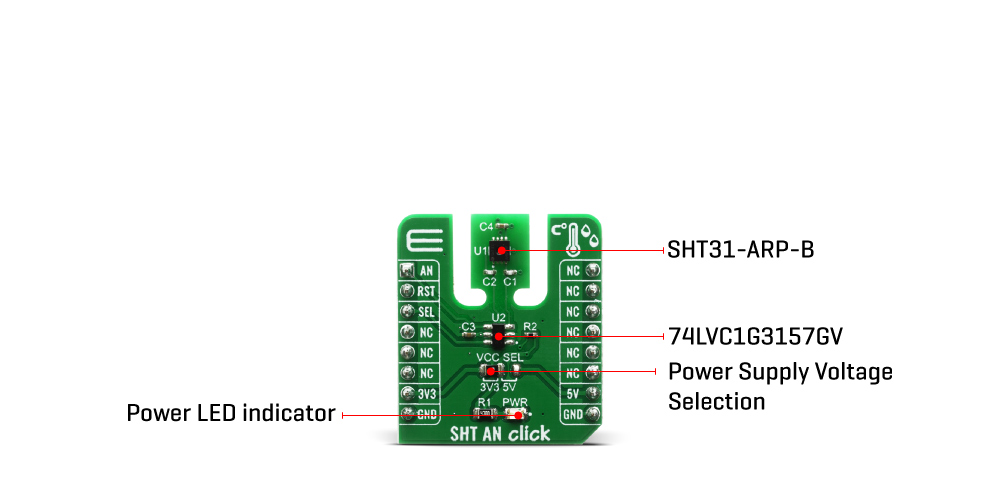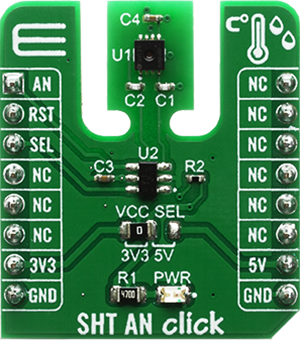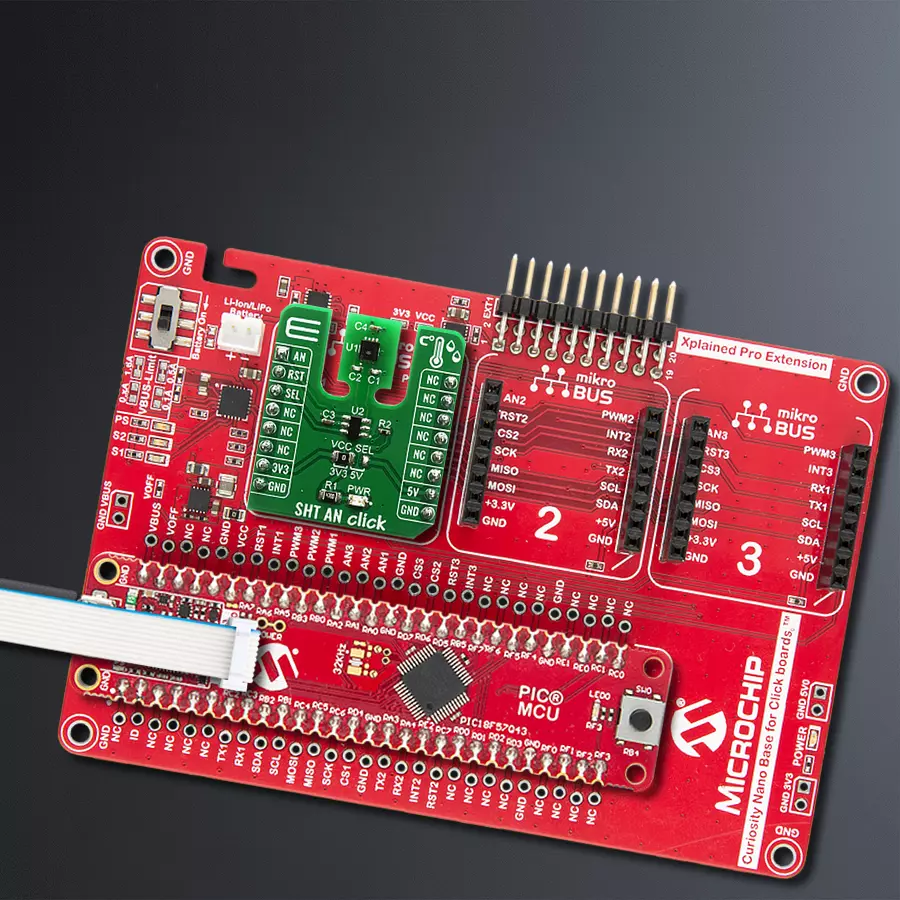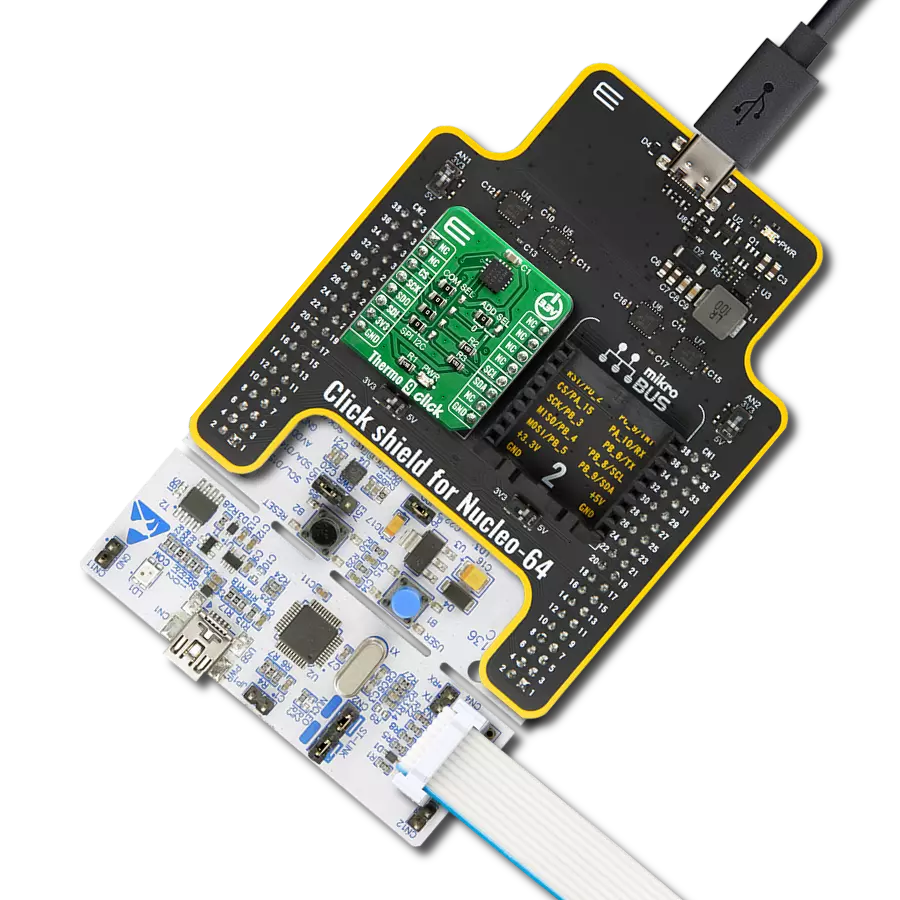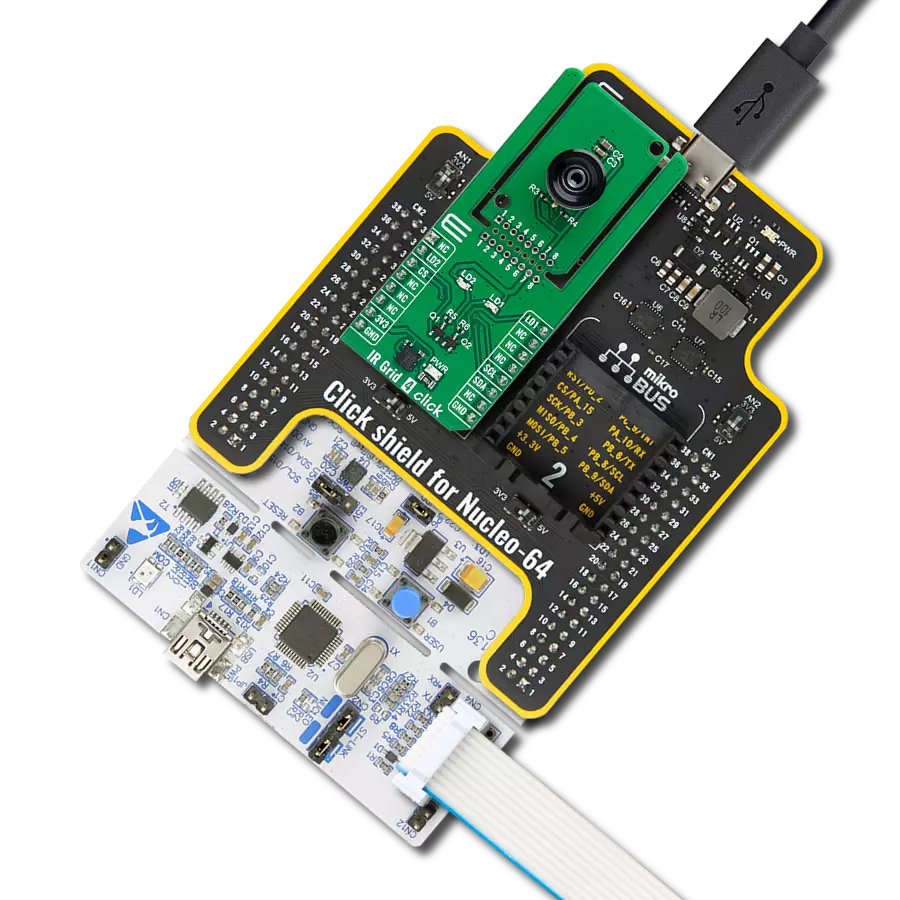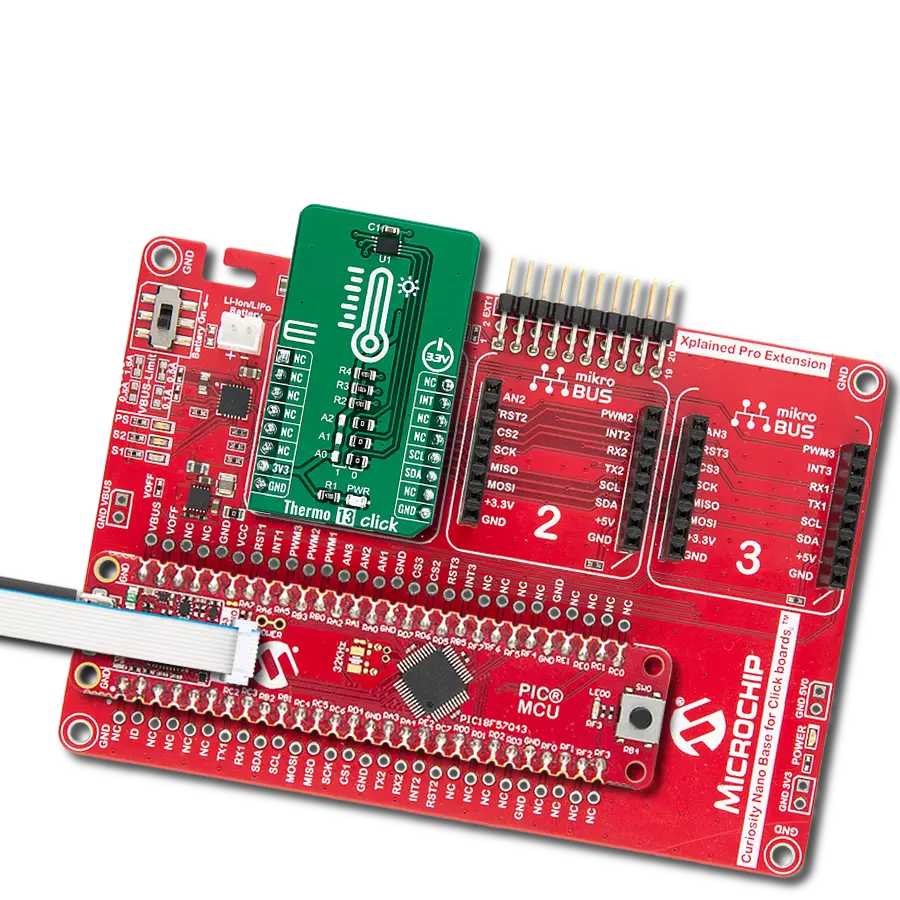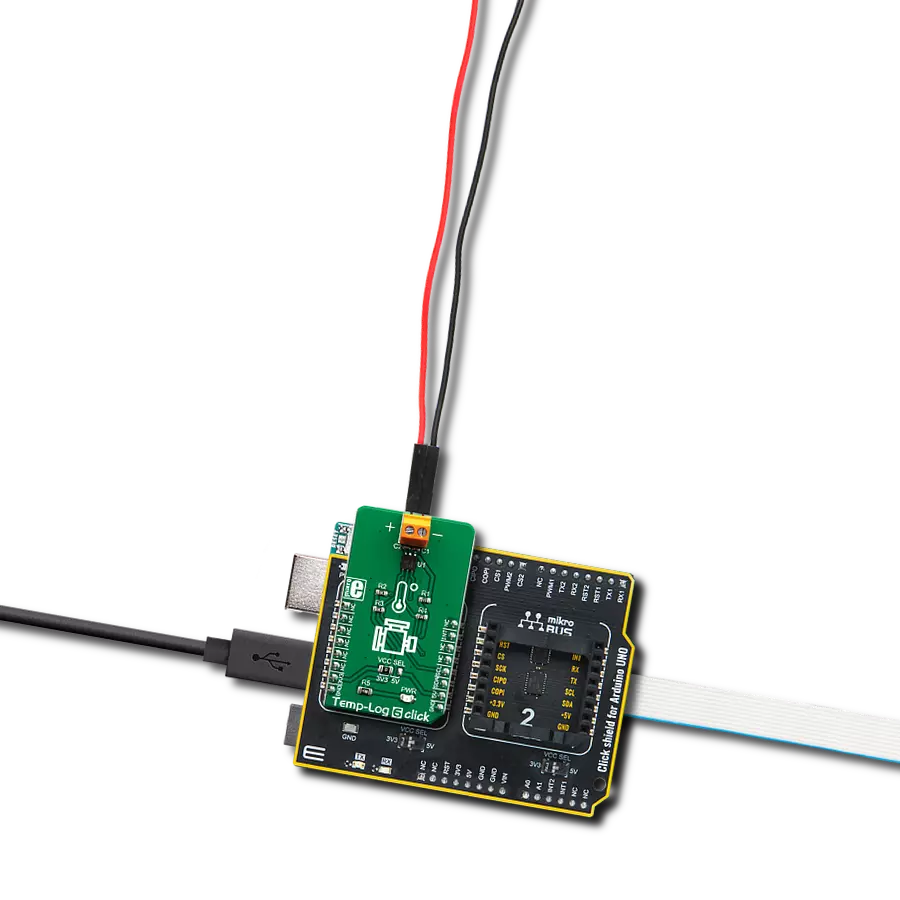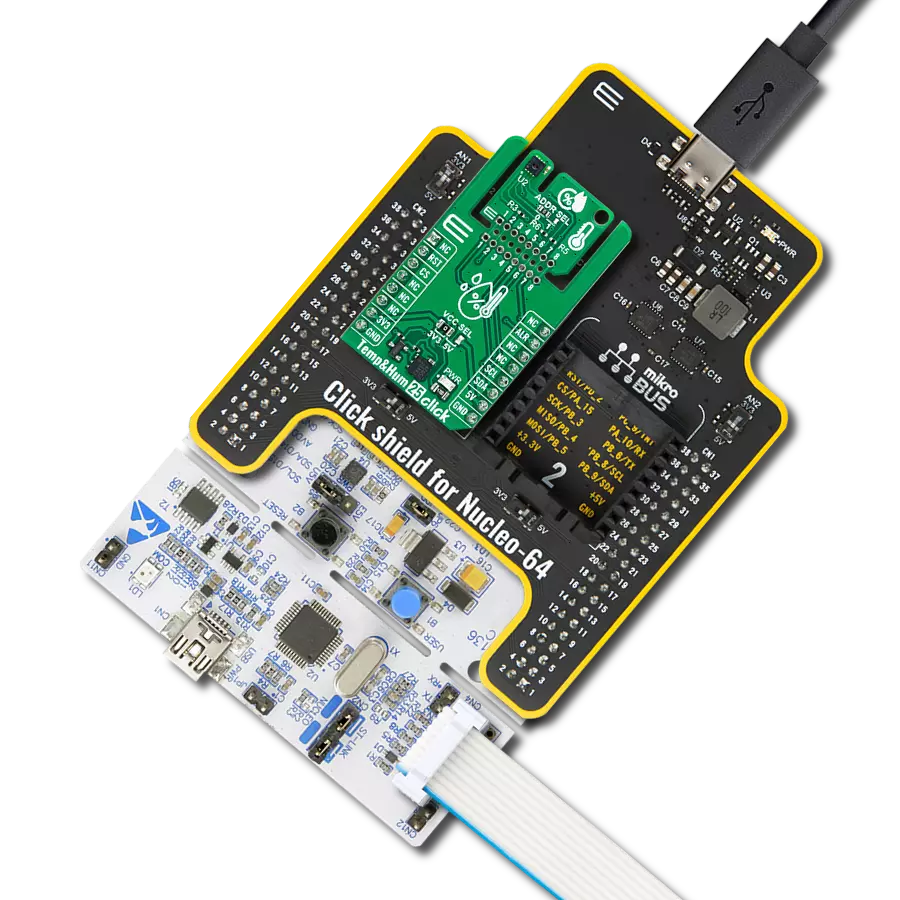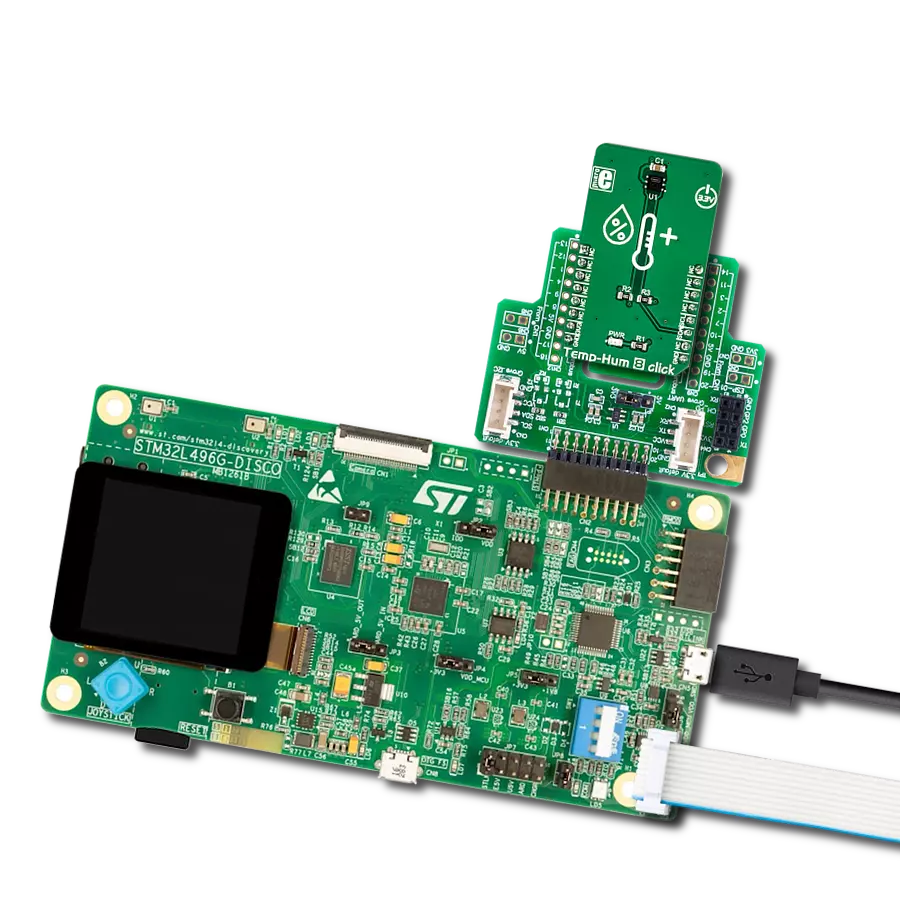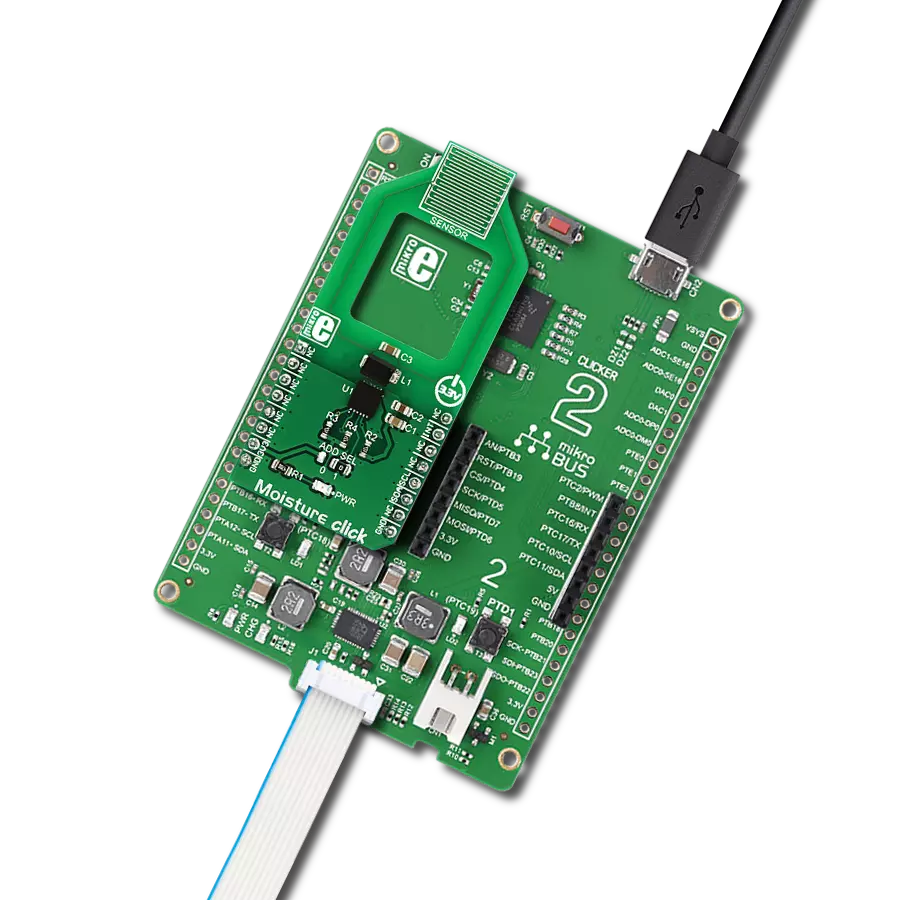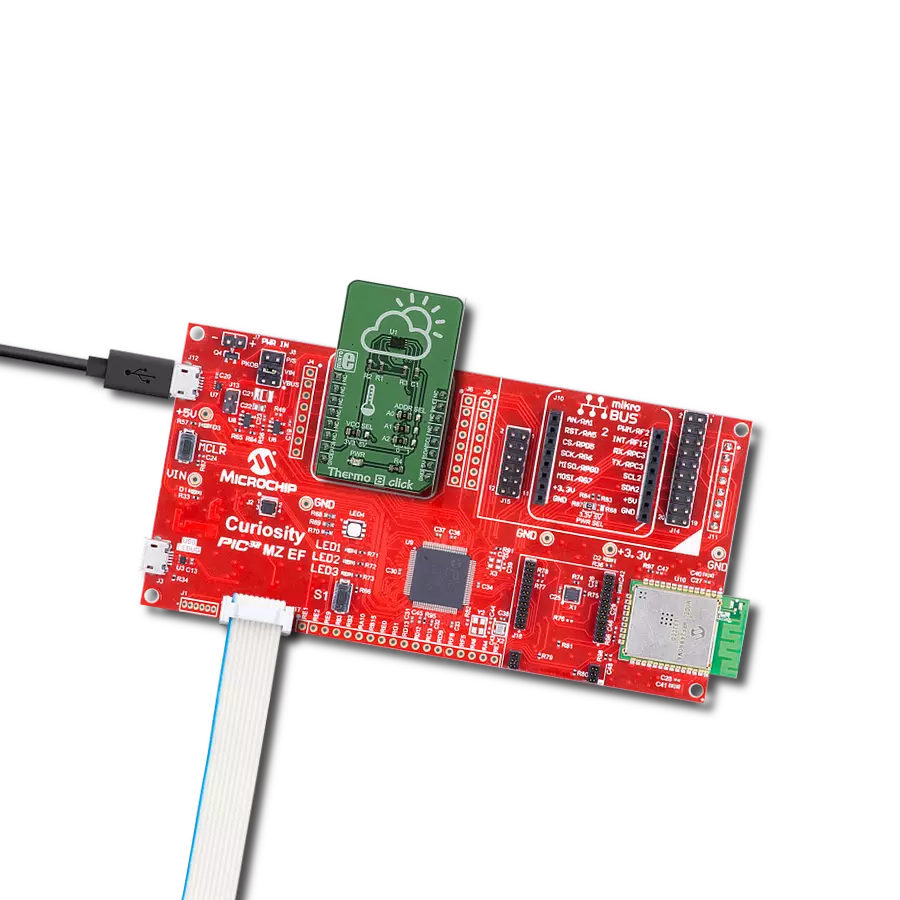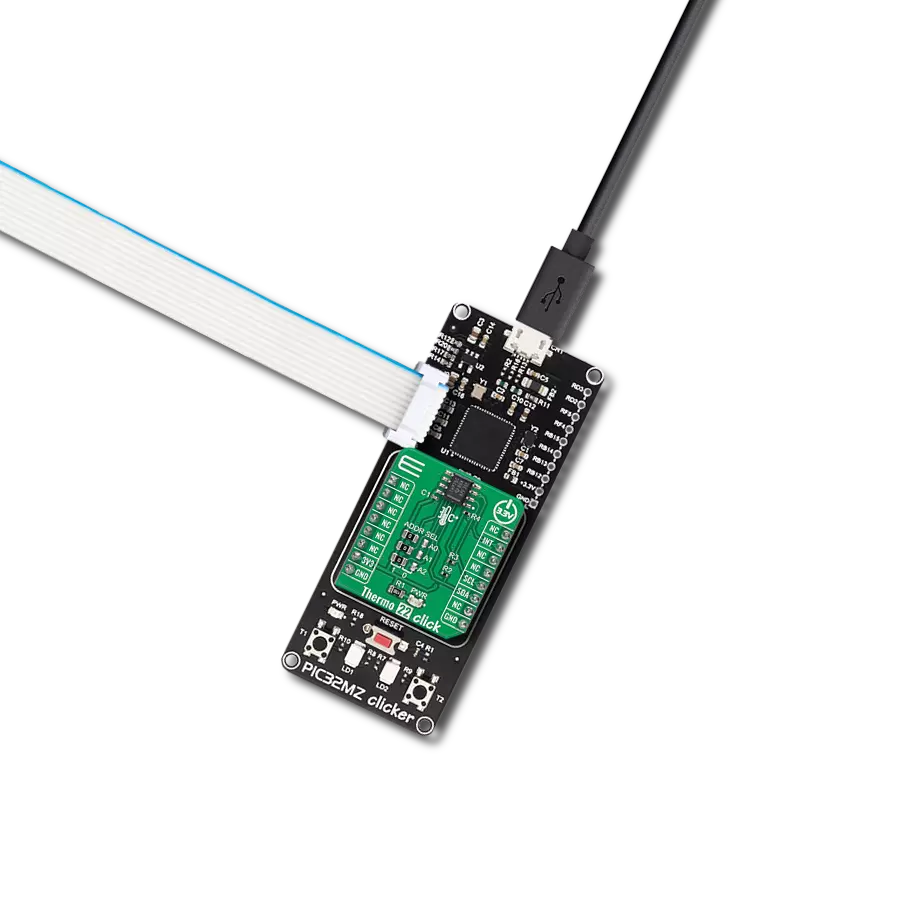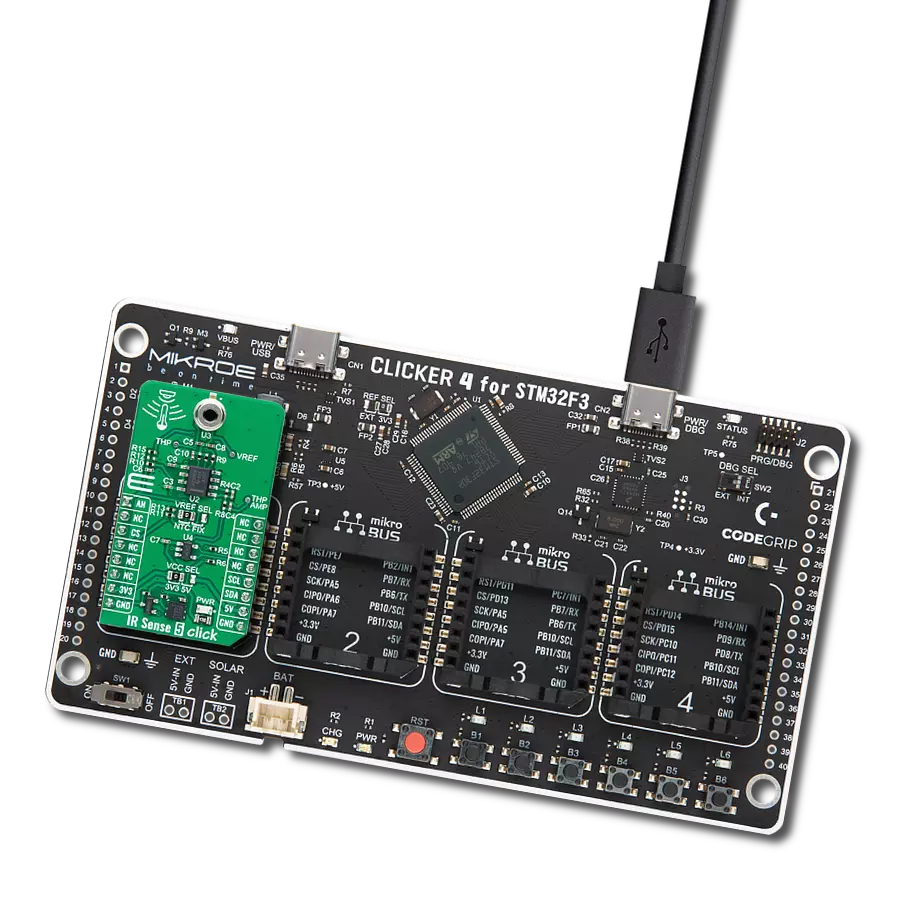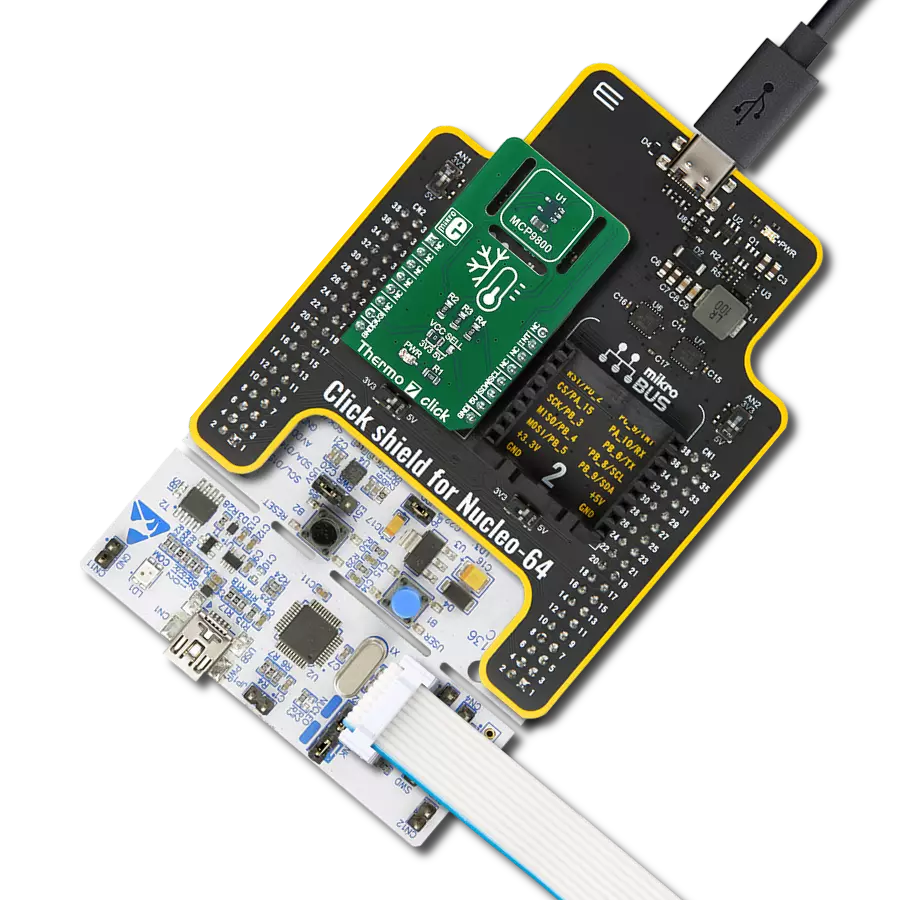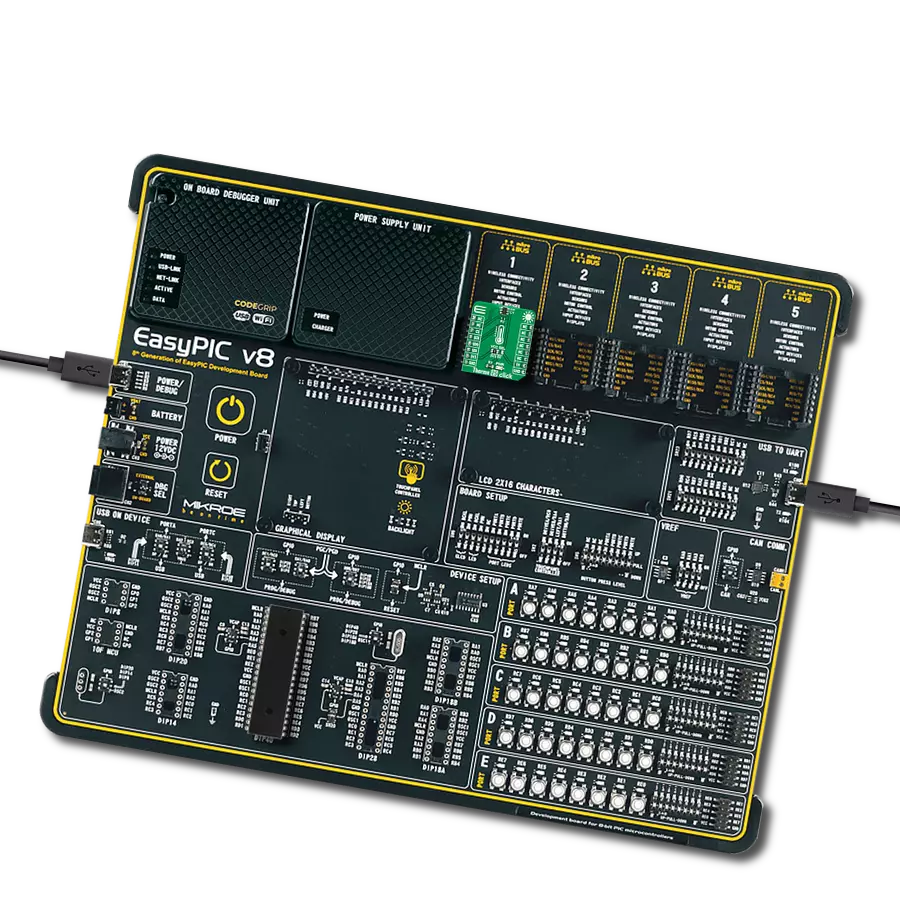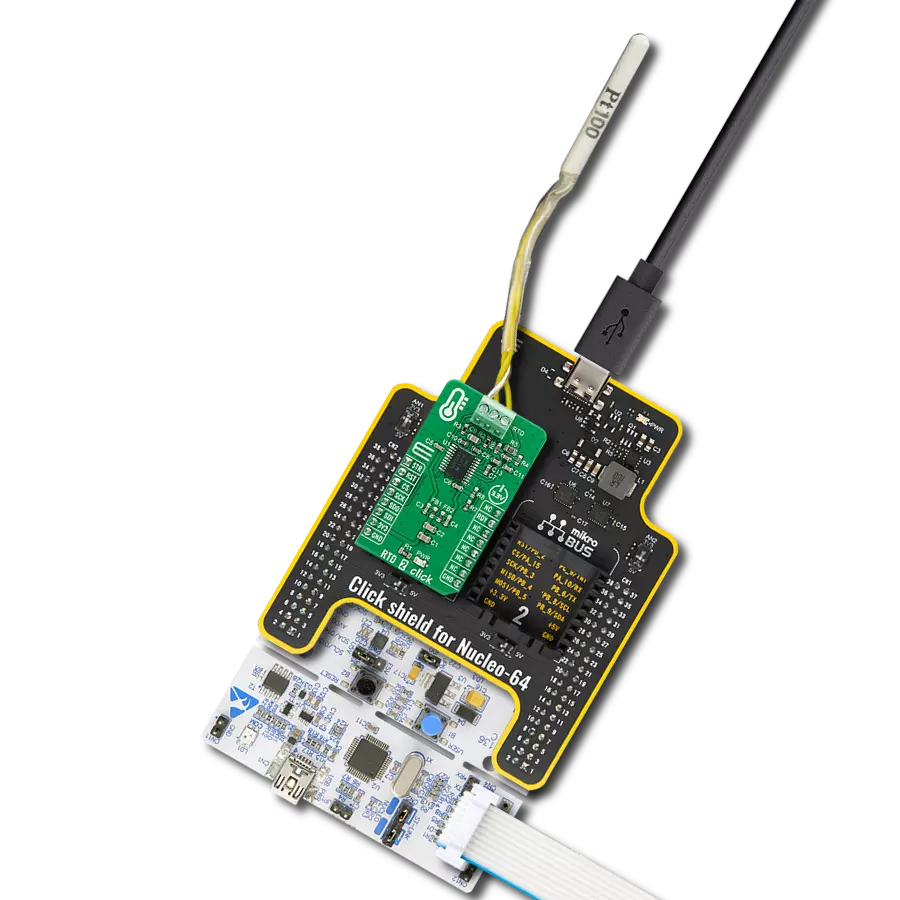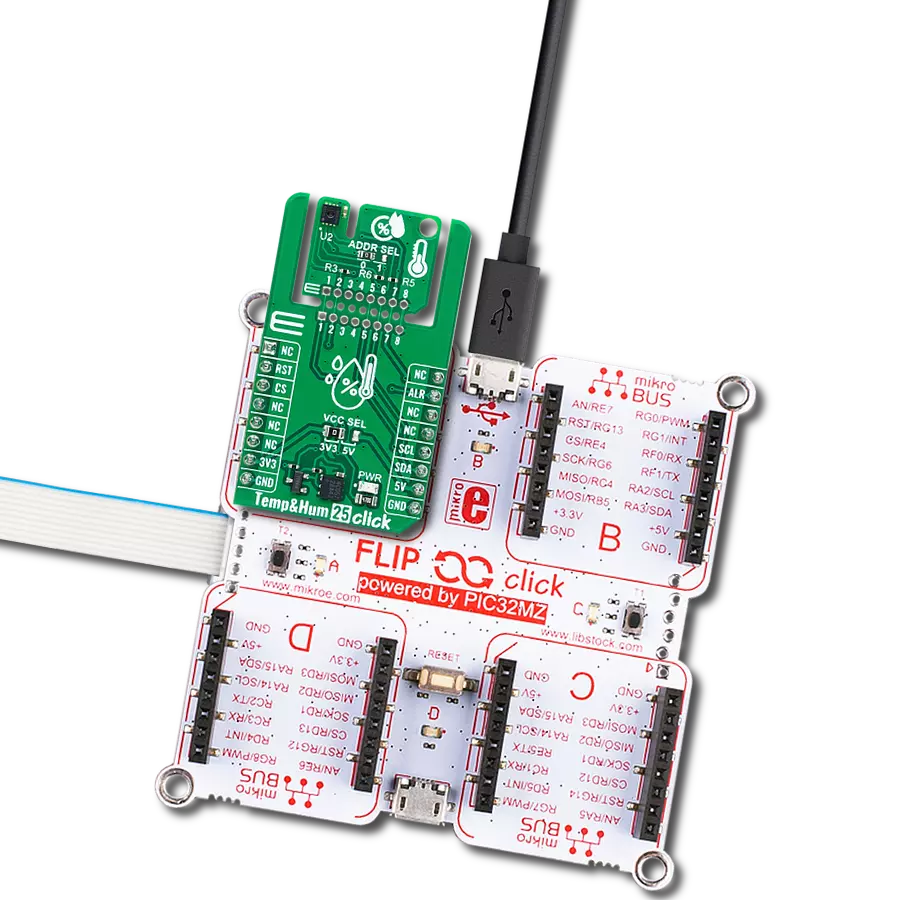We're not just measuring temperature and humidity; we're crafting the art of perfect climate control to provide you with an environment that harmonizes with your every need and desire.
A
A
Hardware Overview
How does it work?
SHT AN Click is based on the SHT31-ARP-B, a temperature and humidity sensor from Sensirion, built on a completely new and optimized CMOSens® chip, which allows for increased reliability and improved accuracy specifications. Sensor can be ordered with filter membrane which is a PTFE film that protects sensor from opening from water and dust. Since the SHT31-ARP-B is a temperature and humidity (T and RH) sensor with two analog outputs for each measurement, and on the mikroBUS socket we have only one analog output we multiplexed sensor output by suing 74LVC1G3157GV, 2
channel analog multiplexer/demultiplexer. Switching between temperature and humidity measurements is performed by asserting the selection input (SEL) which is connected to the multiplexer and by that way selecting desired data output. Measured data is supplied as radiometric voltage output, after reading the temperature or humidity analog signal user will have to do conversion to a physical value. The physical values as measured by the sensor are mapped to a radiometric voltage output (VT, VRH as 10 to 90% of VDD). Prior to conversion into a voltage signal, the physical values are linearized and
compensated for temperature and supply voltage effects by the sensor. Additionally, the voltage output is calibrated for each sensor. The nRST pin is active low and may be used to generate a reset of the sensor. A minimum pulse duration of 1 µs is required to reliably trigger a reset. The nRST signal is routed to the mikroBUS™ RST pin. This Click board™ can be supplied and interfaced with both 3.3V and 5V without the need for any external components. The onboard SMD jumper labeled as VCC SEL allows voltage selection for interfacing with both 3.3V and 5V microcontrollers.
Features overview
Development board
PIC18F57Q43 Curiosity Nano evaluation kit is a cutting-edge hardware platform designed to evaluate microcontrollers within the PIC18-Q43 family. Central to its design is the inclusion of the powerful PIC18F57Q43 microcontroller (MCU), offering advanced functionalities and robust performance. Key features of this evaluation kit include a yellow user LED and a responsive
mechanical user switch, providing seamless interaction and testing. The provision for a 32.768kHz crystal footprint ensures precision timing capabilities. With an onboard debugger boasting a green power and status LED, programming and debugging become intuitive and efficient. Further enhancing its utility is the Virtual serial port (CDC) and a debug GPIO channel (DGI
GPIO), offering extensive connectivity options. Powered via USB, this kit boasts an adjustable target voltage feature facilitated by the MIC5353 LDO regulator, ensuring stable operation with an output voltage ranging from 1.8V to 5.1V, with a maximum output current of 500mA, subject to ambient temperature and voltage constraints.
Microcontroller Overview
MCU Card / MCU

Architecture
PIC
MCU Memory (KB)
128
Silicon Vendor
Microchip
Pin count
48
RAM (Bytes)
8196
You complete me!
Accessories
Curiosity Nano Base for Click boards is a versatile hardware extension platform created to streamline the integration between Curiosity Nano kits and extension boards, tailored explicitly for the mikroBUS™-standardized Click boards and Xplained Pro extension boards. This innovative base board (shield) offers seamless connectivity and expansion possibilities, simplifying experimentation and development. Key features include USB power compatibility from the Curiosity Nano kit, alongside an alternative external power input option for enhanced flexibility. The onboard Li-Ion/LiPo charger and management circuit ensure smooth operation for battery-powered applications, simplifying usage and management. Moreover, the base incorporates a fixed 3.3V PSU dedicated to target and mikroBUS™ power rails, alongside a fixed 5.0V boost converter catering to 5V power rails of mikroBUS™ sockets, providing stable power delivery for various connected devices.
Used MCU Pins
mikroBUS™ mapper
Take a closer look
Click board™ Schematic

Step by step
Project assembly
Software Support
Library Description
This library contains API for SHT AN Click driver.
Key functions:
shtan_set_mode- Function sets signal output ADC modeshtan_reset- Reset function
Open Source
Code example
The complete application code and a ready-to-use project are available through the NECTO Studio Package Manager for direct installation in the NECTO Studio. The application code can also be found on the MIKROE GitHub account.
/*!
* \file
* \brief ShtAn Click example
*
* # Description
* This app demonstrates the use of SHT AN Click to measure temperature and humidity.
*
* The demo application is composed of two sections :
*
* ## Application Init
* Initialization driver enables - GPIO, sw reset,
* initializes ADC, set ADC channel and sets ADC read mode.
*
* ## Application Task
* This is a example which demonstrates the use of SHT AN Click board.
* Measured temperature and humidity ADC data and calculate temperature data to degrees
* Celsius/Fahrenheit and relative humidity data to percentage.
* Results are being sent to the Usart Terminal where you can track their changes.
* All data logs on usb uart for aproximetly every 1 sec.
*
* \author Nemanja Medakovic
*
*/
// ------------------------------------------------------------------- INCLUDES
#include "board.h"
#include "log.h"
#include "shtan.h"
// ------------------------------------------------------------------ VARIABLES
static shtan_t shtan;
static log_t logger;
// ------------------------------------------------------ APPLICATION FUNCTIONS
void application_init ( void )
{
log_cfg_t log_cfg;
shtan_cfg_t cfg;
/**
* Logger initialization.
* Default baud rate: 115200
* Default log level: LOG_LEVEL_DEBUG
* @note If USB_UART_RX and USB_UART_TX
* are defined as HAL_PIN_NC, you will
* need to define them manually for log to work.
* See @b LOG_MAP_USB_UART macro definition for detailed explanation.
*/
LOG_MAP_USB_UART( log_cfg );
log_init( &logger, &log_cfg );
log_info( &logger, "---- Application Init... ----" );
// Click initialization.
shtan_cfg_setup( &cfg );
SHTAN_MAP_MIKROBUS( cfg, MIKROBUS_1 );
if ( shtan_init( &shtan, &cfg ) == ADC_ERROR )
{
log_info( &logger, "---- Application Init Error. ----" );
log_info( &logger, "---- Please, run program again... ----" );
for ( ; ; );
}
log_info( &logger, "---- Application Init Done. ----" );
shtan_reset( &shtan );
log_info( &logger, "---- Application Running... ----\n" );
}
void application_task ( void )
{
shtan_set_mode( &shtan, SHTAN_SET_ADC_MODE_TEMP );
Delay_ms ( 200 );
float shtan_temperature;
if ( shtan_meas_temperature( &shtan, &shtan_temperature, SHTAN_SET_TEMP_MODE_DEG_C ) != ADC_ERROR )
{
log_printf( &logger, " Temp [T] : %.2f degC\r\n", shtan_temperature );
}
shtan_set_mode( &shtan, SHTAN_SET_ADC_MODE_HUM );
Delay_ms ( 200 );
float shtan_humidity;
if ( shtan_meas_humidity( &shtan, &shtan_humidity ) != ADC_ERROR )
{
log_printf( &logger, " Hum [RH] : %.2f %%\r\n", shtan_humidity );
}
log_printf( &logger, "\n" );
Delay_ms ( 1000 );
}
int main ( void )
{
/* Do not remove this line or clock might not be set correctly. */
#ifdef PREINIT_SUPPORTED
preinit();
#endif
application_init( );
for ( ; ; )
{
application_task( );
}
return 0;
}
// ------------------------------------------------------------------------ END
Additional Support
Resources
Category:Temperature & humidity
